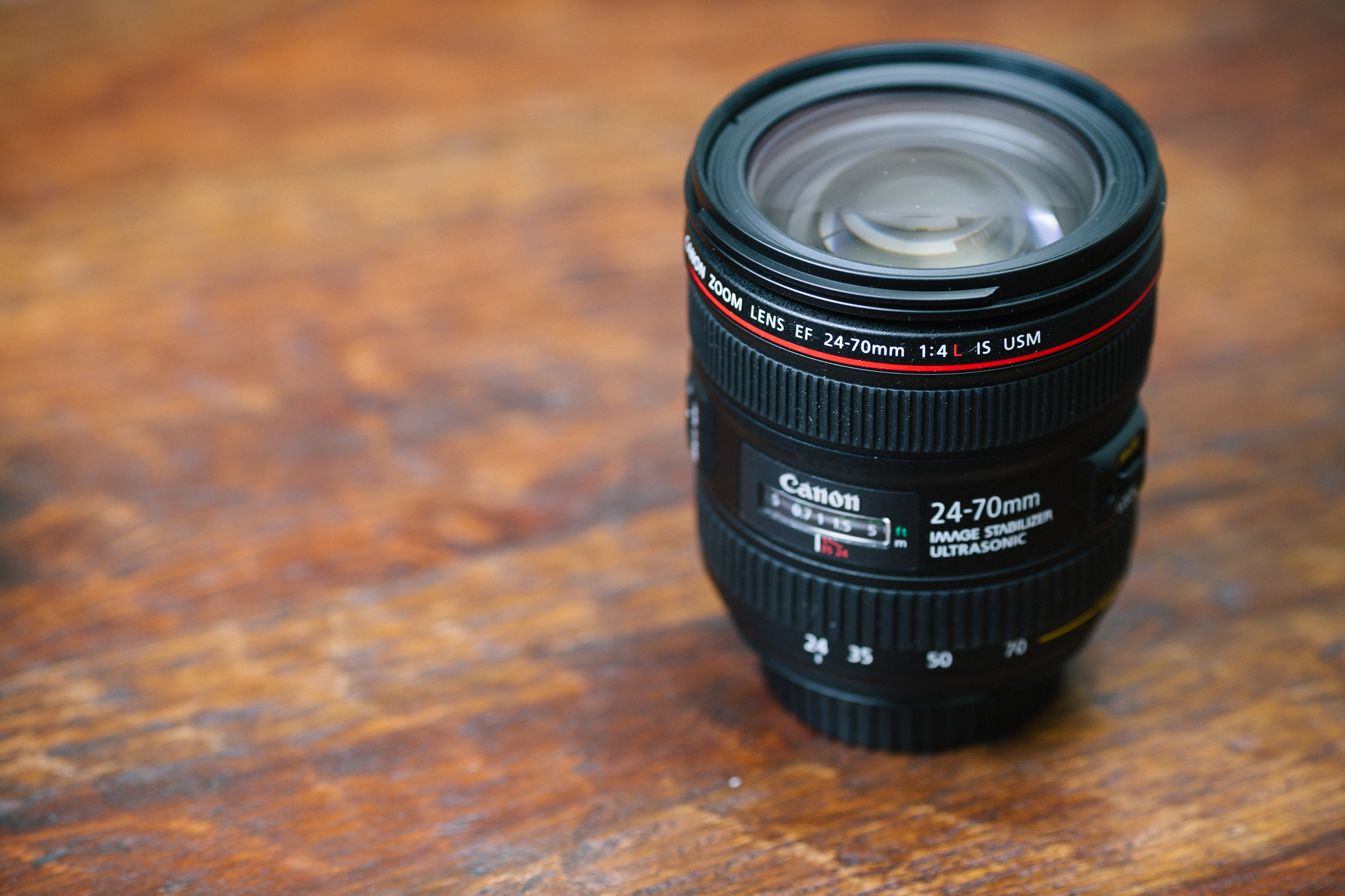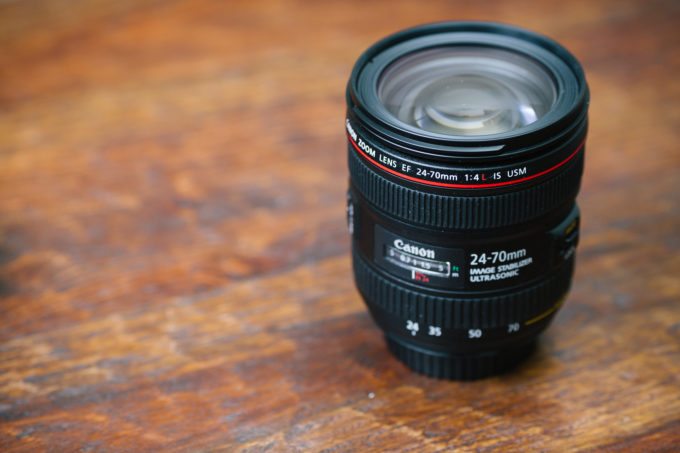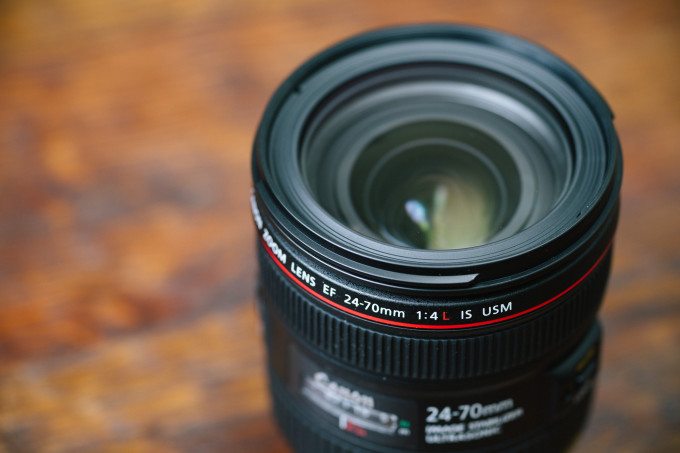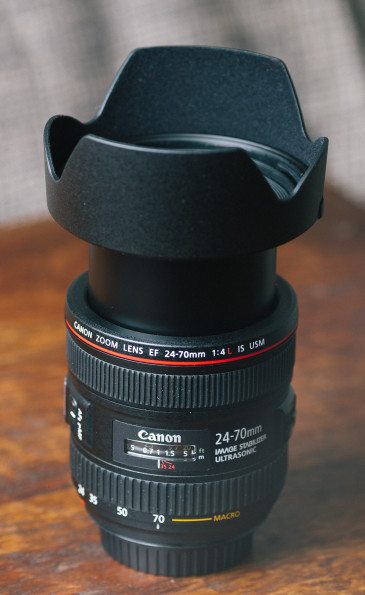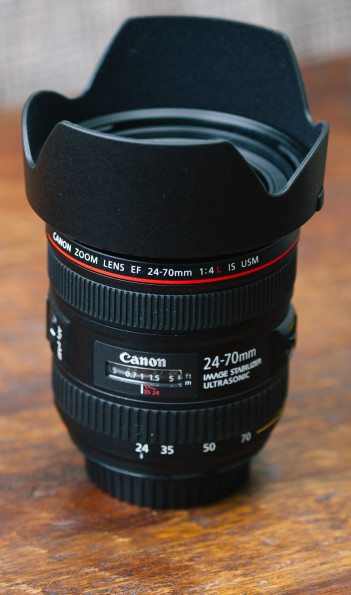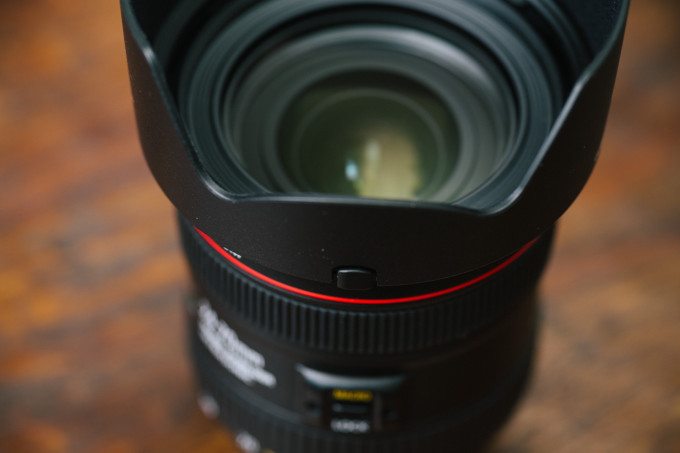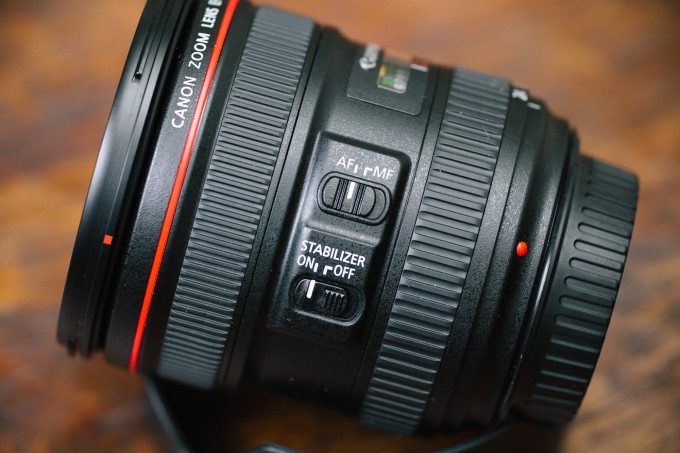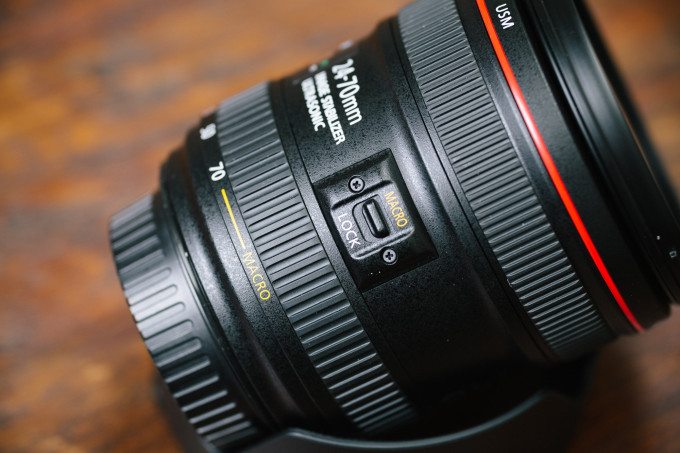Canon’s new EF 24-70mm f4L IS: where does it fit? What’s the point? Given that they already have the 24-70mm f2.8L II and even the 24-105mm f4L IS, I didn’t understand why they chose to make this lens. My initial reaction was the same as many when I first heard of it, but I wanted to give it a chance anyways to see if it was a worthwhile lens. Adorama Camera was kind enough to loan one to me, and the following is a summary of my experience with Canon’s 24-70mm f4L IS.

Pros & Cons
Pros
- Image Stabilization that works well
- Great size / weight for a professional zoom
- Very useful macro mode
Cons
- Expensive for what it is
- Limited zoom range for an f4 lens
- Overall image quality was very good, but not up to its price-tag
Gear Used
Canon 580EXII Speedlights (Discontinued: 600EX-RT is it’s replacement)
Pocket Wizard Plus II Triggers (Discontinued: Plus III triggers are the replacement)
Photoflex 45″ Shoot-Thru Umbrellas
Tech Specs
Copied from Adorama’s Product Page
| Construction | 12 groups /15 elements |
| Angle of view | 84° – 34° |
| Closest Focusing Distance | 0.38m / 1.25 ft. |
| Filter Size | 77mm |
| Focus Adjustment | Inner focusing system |
| Dimensions (Diameter x Length) | 3.3 x 3.7 in. / 83.4 x 93mm |
| Weight | 21 oz. / 600g |
- L-Series standard zoom lens delivers superb image quality in a compact, lightweight design.
- 2 aspheric and 2 UD lens elements for high image quality throughout the entire zoom range.
- Full macro shooting mode with up to 0.7x magnification, easily accessible with a one touch switch at the extreme telephoto end.
- Image stabilization effective up to 4 shutter speed stops and Hybrid IS compensates for both angular and shift types of camera shake for macro shooting.
- Resistant to dust and water, enabling shooting even in harsh and rigorous conditions.
- Circular diaphragm (9 blades) delivers beautiful, soft backgrounds.
- Inner focusing and ring USM for silent, fast autofocusing.
- Fluorine coating on front and rear lens surfaces reduces smears and fingerprints.
- Minimum focusing distance of 1.25 ft. / 0.38m across the entire zoom range (excluding macro).
Ergonomics
The Canon EF 24-70mm f4L IS lens is a really nice size for a professional zoom. It is shorter than both the 24-70mm f2.8L and the 24-105mm f4L IS, and it fits perfectly on full frame bodies like the 5D or 6D.
Like both of the other zoom lenses in this range, as you zoom through the focal range (24mm through 70mm) the lens will extend outwards, reaching full extension at 70mm. The included lens hood will attach to the front of the lens and extend with the barrel.
The lens hood also has a locking release button which is a recent addition by Canon that is most welcome in my opinion. I’ve found that with my older lenses, the hoods can eventually work their way loose and become a bit wobbly. I imagine this will alleviate that problem.
On the side of the lens barrel are two toggle switches, one is to enable or disable autofocus (note: this lens has the FTM or Full-Time Manual feature which means you don’t have to disable autofocus to be able to manually focus the lens, it is available at all times.) The other is to enable or disable the image stabilizer.
On the other side of the lens you will see the Macro / Lock switch, when you have the lens set to 24mm, you can lock the zoom so the lens cannot extend on its own, this is to eliminate the possibility of zoom-creep and likely to also preserve the autofocus motor inside the lens from excessive wear while in transit. The second function of this switch is to allow you to go into the macro mode of this lens by rotating the zoom ring to 70mm, pressing the switch up, and then rotating past 70mm and into the macro range.
Build Quality
Canon’s L lenses are to be considered “Professional-Grade”, they are signified by the bright red ring encircling the front of the lens barrel. As such, these lenses are built very well and will withstand all but the harshest conditions (within reason of course). Over the years I have owned and used many different L lenses and they were all superbly built and confidence-inspiring, this lens is no-different and feels just as solid as any L lens I’ve used up to this point. Canon uses high quality materials for these lenses and it shows, it is also weather / dust sealed which means it can stand up to some pretty unfortunate weather conditions. Additionally, they used two Aspherical elements in its construction which helps correct some issues which can pop up in zoom lens designs. Overall, this lens is built as well as I would expect an L lens to be, and I see no reason why it wouldn’t hold up just as well as my other L lenses have over the years.
Autofocus
Canon lenses that are equipped with the ring-type USM motors are fast to focus, simple as that. This lens utilizes an internal-focusing mechanism which means the elements do not extend or rotate during focusing meaning circular polarizer use is quite easy. I’ve had a chance to try the lens out in both “typical” and “low” light conditions, both of which seemed to be no trouble. I have a tendency to stick to center-point AF on my 5DmkII because it is the most reliable one, and I had an easy time locking onto subjects. On the 6D the experience was largely the same, with the notable exception that the outer focusing points were a bit more reliable than the 5DmkII seemed to be.
When in macro mode on this lens I did find that there would be some hunting trying to lock focus, I attribute this mostly to my being hand-held rather than on a tripod which meant even the slightest movement on my part would change the plane of focus (which is quite small when you’re in macro mode); given that fact, I wouldn’t go as far as calling it a fault. This lens is also equipped with a 4-stop Hybrid IS system which I can say works wonderfully! I really can’t find much negative things to say about this lens in the autofocus department, it just works, and works well.
Most Canon DSLRs are now able to do Autofocus Microadjustment, which, if you’re unfamiliar with the feature, means you can dial in a specific amount of front or back focus to counter for any front or back focusing issues with the lens itself. Ideally you want to be at 0, as this means the lens is more or less calibrated to the same settings as your camera. I’m happy to say that on both the 6D and my own 5DmkII bodies I did not have to do any microadjustment with this lens. Naturally this will not always be the case, but it was nice to see that I received an accurate copy first try.
Ease of Use
With my own personal equipment, I have made the decision to use only fixed focal length (prime) lenses for my work. Using a zoom lens again has been a little strange, but that’s only because I keep forgetting I have focal length flexibility with that handy zoom ring ;).
In all seriousness, this lens is very simple to use and I believe the only usability hiccup I’ve faced has been switching into the macro mode. It’s not “difficult” to do, but somewhat awkward if you’re trying to do it quickly without looking at the lens. There is a small zoom lock switch on the side of the lens and when you press it up you can rotate the lens past the 70mm mark and into the “macro” range (indicated by a yellow line and lettering). Overall it’s easy enough, it just helps to look at it the first couple times you do it so you remember the orientation it needs to be in.
Image Quality

Most of Canon’s L lenses are truly exceptional (I say most, and not all because I have had some unpleasant ones) with regard to image quality and while I do prefer primes (as mentioned earlier) I have to say, that the quality of the images from this lens are very good. I have to be honest and say that I do wish it was a little better though.For the price of entry, and relatively “slow” maximum aperture of f4, I feel like this lens could, and should, be sharper than it is. I know Canon is capable of doing this with their new lenses, because the dirt cheap 40mm f2.8 pancake lens is sharp as a knife’s edge. Now, don’t get me wrong, the quality is definitely good, and in my opinion perfectly “printable”, but I just feel that they could have pushed the resolving power even further.
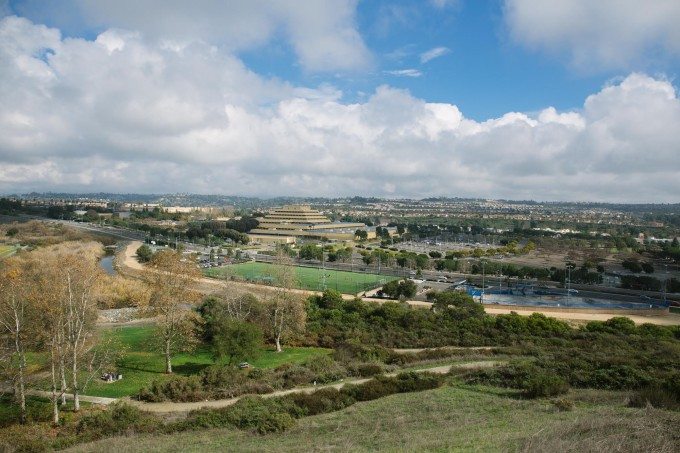
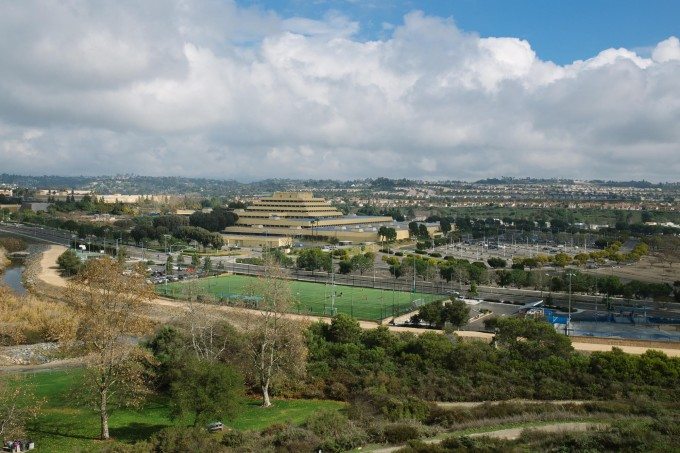
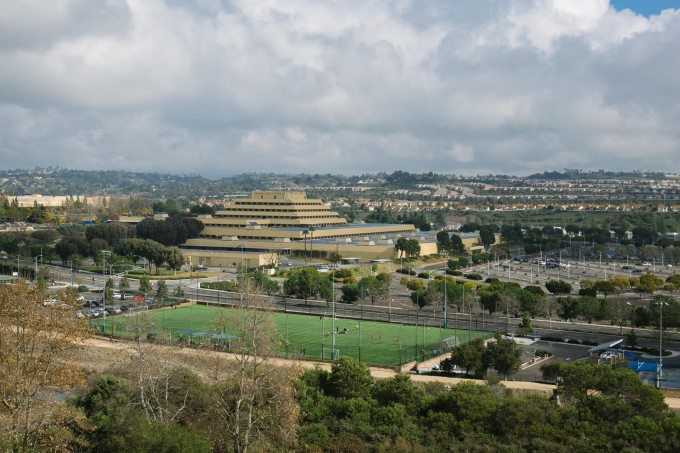
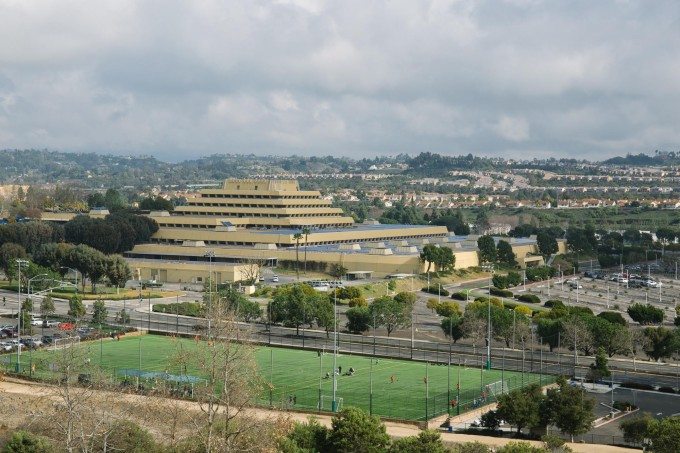
Sharpness
The sharpness in the center is good from wide open, and the corners do improve from f5.6 onwards, but it never really “wowed” me in the way other lenses have. It could be that I am spoiled by prime lenses, but everything on paper said that this lens should have been stellar, yet the final result didn’t meet my expectations. I’m sure with some post-processing and Photoshop-massaging-techno-wizardry one can pull out some great images, but I like to get the highest quality possible straight from the camera.
Color Fringing
With an f4 lens, it’s unlikely that one would experience much, if any color fringing, or “Chromatic Aberration” in their images. This is usually something that we see most often in large-aperture fast prime lenses. I did not specifically notice any fringing in my tests, but if it does manage to show up on a particularly specular highlight area of your image, today’s RAW processing software is most likely able to dial it out almost completely.
Distortion
Zoom lenses often have distortion. That’s just a factor that we have to deal with, that being said, the 24-70mm f4L actually isn’t too bad with distortion I found. Mild barrel distortion can be seen, but it’s not enough to ruin most images. There is currently (as of Lightroom 4.3 and Adobe Camera Raw 7.3) no lens correction profile available. I presume this will be added into the next update, and once it is added you will be able to easily correct for the mild distortion that is present in this lens. I found it to be most pronounced at the wide end (24mm), but this is to be expected. Again, it is pretty mild, and will still leave you with very usable images, even without the lens profile.
Ultimately what we are left with is a lens that performs well, but not exceptionally well, I just can’t help but feel that Canon could have pushed the quality of this lens even further. It is very good, but with a slow-speed zoom lens, I would expect incredible sharpness across the frame, and I don’t feel that is what was delivered. Please see my additional examples below.




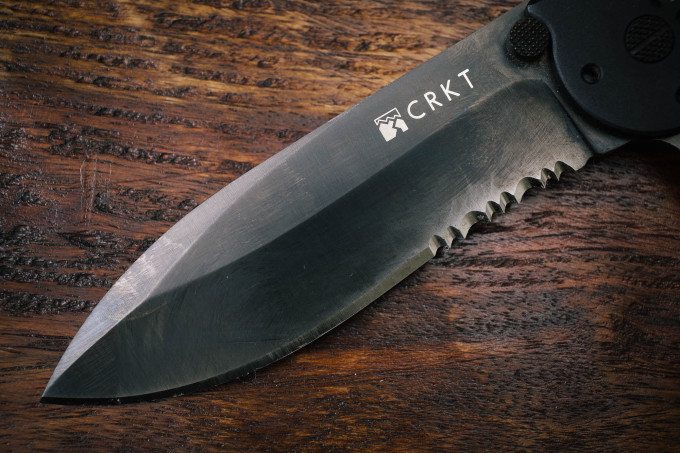
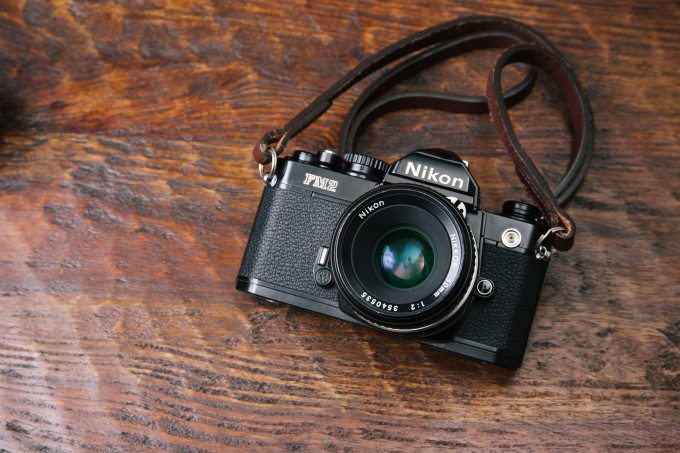
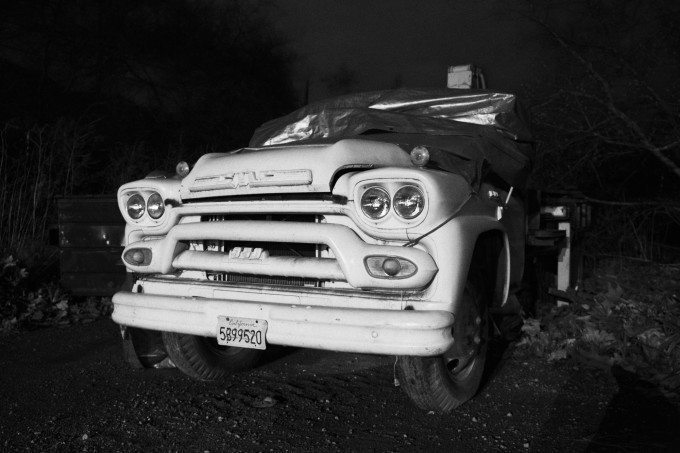
Conclusions
My first reaction on hearing about this lens was one of confusion, I didn’t get the point of yet another midrange zoom from Canon. Especially since the range fell right within the 24-105mm f4L IS and it was considerably more expensive. Regardless of this initially negative opinion, I figured that I would still go ahead and give it a chance to see how well it actually performed. When it arrived and I put it on my camera for the first time, two specific things stuck out to me that I liked, it was a great size/weight for a professional zoom, and the IS works really, really well. Part of the reason I gave up my zoom lenses, was that I hated the bulk and weight of them after so many years of lugging them around. This new 24-70mm f4L IS is a great size and not too heavy which means it could be a fantastic travel lens. It handles well, focuses fast, and has very good image quality. Should be a winner, right? Well I’m conflicted to be perfectly honest with you all, it’s a very good lens, but I feel that it should have been considerably cheaper for what it is. It works well, but it’s a stretch to call it a “good deal” at $1500 (current price at the time of this writing). In my opinion, I think that the EF 24-105mm f4L IS is a better value with similar image quality. In the end, only you can decide if it’s the right lens for you, there are definitely things I liked about it, and if it was handed to me, I’d happily shoot with it, particularly as a travel lens, but when it comes time to talk money, my credit card is staying firmly planted in my wallet on this one.
Please Support The Phoblographer
We love to bring you guys the latest and greatest news and gear related stuff. However, we can’t keep doing that unless we have your continued support. If you would like to purchase any of the items mentioned, please do so by clicking our links first and then purchasing the items as we then get a small portion of the sale to help run the website.
Also, please follow us on Facebook, Flickr and Twitter.


